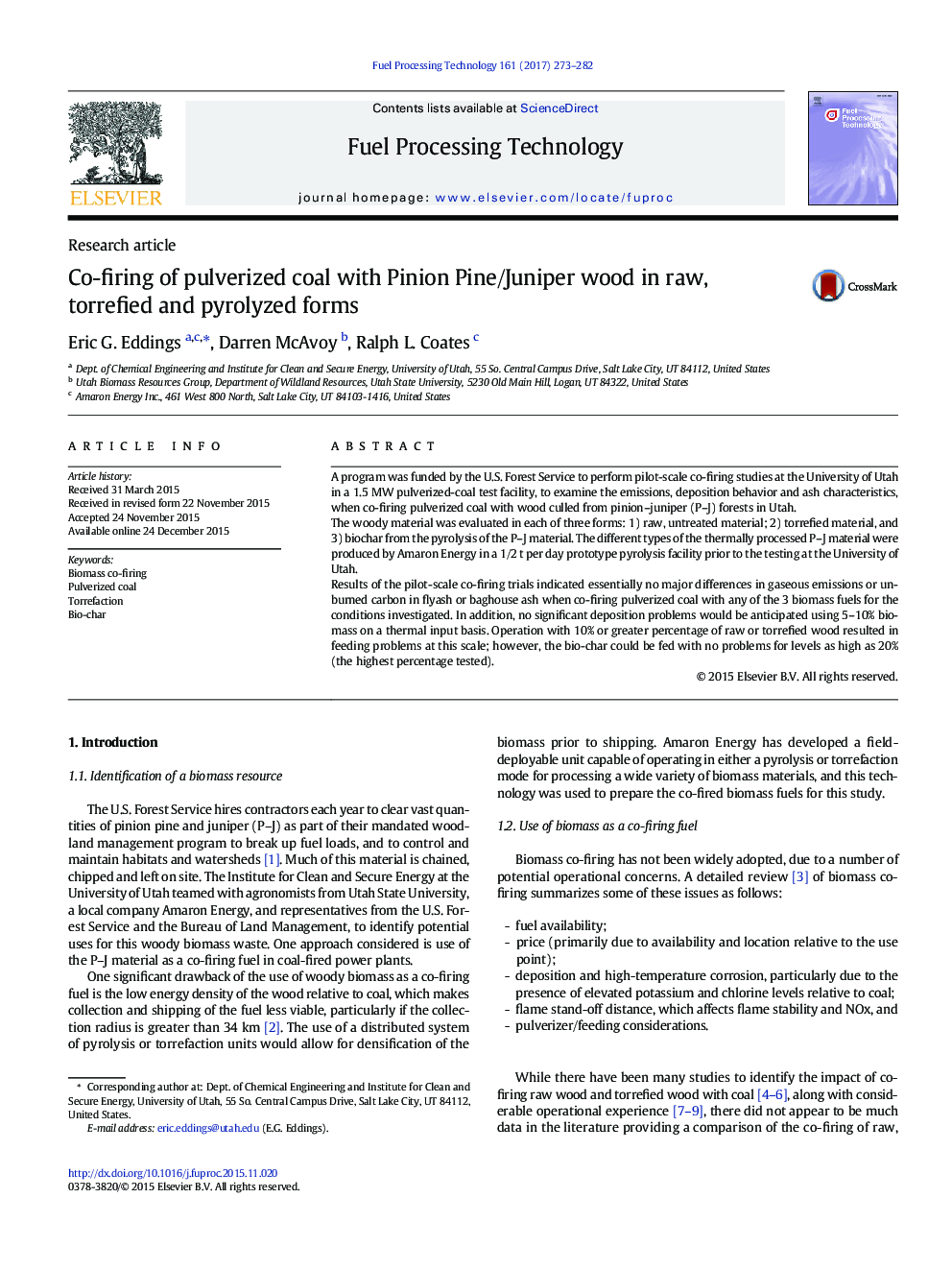| Article ID | Journal | Published Year | Pages | File Type |
|---|---|---|---|---|
| 6476545 | Fuel Processing Technology | 2017 | 10 Pages |
â¢Co-fired pulverized coal with raw and torrefied wood, and bio-char at 1.5 MWâ¢No major differences found in gaseous emissions or unburned carbon in ashâ¢No significant deposition problems anticipated when firing 5-10% biomassâ¢Feeding issues observed when co-firing with 10% or higher raw or torrefied woodâ¢No feeding issues up to 20% bio-char, making it a good candidate for co-firing
A program was funded by the U.S. Forest Service to perform pilot-scale co-firing studies at the University of Utah in a 1.5Â MW pulverized-coal test facility, to examine the emissions, deposition behavior and ash characteristics, when co-firing pulverized coal with wood culled from pinion-juniper (P-J) forests in Utah.The woody material was evaluated in each of three forms: 1) raw, untreated material; 2) torrefied material, and 3) biochar from the pyrolysis of the P-J material. The different types of the thermally processed P-J material were produced by Amaron Energy in a 1/2Â t per day prototype pyrolysis facility prior to the testing at the University of Utah.Results of the pilot-scale co-firing trials indicated essentially no major differences in gaseous emissions or unburned carbon in flyash or baghouse ash when co-firing pulverized coal with any of the 3 biomass fuels for the conditions investigated. In addition, no significant deposition problems would be anticipated using 5-10% biomass on a thermal input basis. Operation with 10% or greater percentage of raw or torrefied wood resulted in feeding problems at this scale; however, the bio-char could be fed with no problems for levels as high as 20% (the highest percentage tested).
